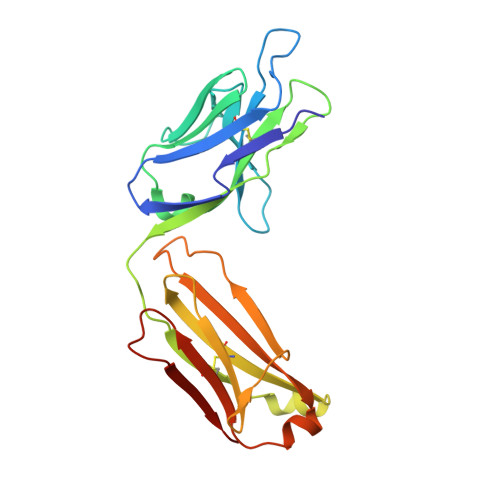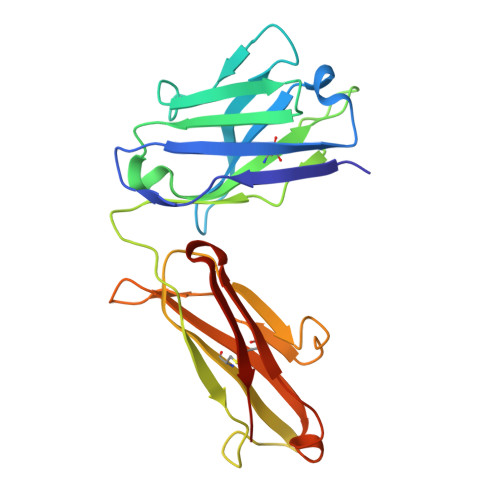A possible role for metallic ions in the carbohydrate cluster recognition displayed by a lewis y specific antibody.
Farrugia, W., Scott, A.M., Ramsland, P.A.(2009) PLoS One 4: e7777-e7777
- PubMed: 19901987
- DOI: https://doi.org/10.1371/journal.pone.0007777
- Primary Citation of Related Structures:
3EYV - PubMed Abstract:
Lewis Y (Le(y)) is a blood group-related carbohydrate that is expressed at high surface densities on the majority of epithelial carcinomas and is a promising target for antibody-based immunotherapy. A humanized Le(y)-specific antibody (hu3S193) has shown encouraging safety, pharmacokinetic and tumor-targeting properties in recently completed Phase I clinical trials. We report the three-dimensional structures for both the free (unliganded) and bound (Le(y) tetrasaccharide) hu3S193 Fab from the same crystal grown in the presence of divalent zinc ions. There is no evidence of significant conformational changes occurring in either the Le(y) carbohydrate antigen or the hu3S193 binding site, which suggests a rigid fit binding mechanism. In the crystal, the hu3S193 Fab molecules are coordinated at their protein-protein interface by two zinc ions and in solution aggregation of Fab can be initiated by zinc, but not magnesium ions. Dynamic light scattering revealed that zinc ions could initiate a sharp transition from hu3S193 Fab monomers to large multimeric aggregates in solution. Zinc ions can mediate interactions between hu3S193 Fab in crystals and in solution. Whether metallic ion mediated aggregation of antibody occurs in vivo is not known, but the present results suggest that similar clustering mechanisms could occur when hu3S193 binds to Le(y) on cells, particularly given the high surface densities of antigen on the target tumor cells.
Organizational Affiliation:
Centre for Immunology, Burnet Institute, Melbourne, Victoria, Australia.



















